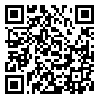Volume 28 - Supplementary
IBJ 2024, 28 - Supplementary: 176-176 |
Back to browse issues page
Download citation:
BibTeX | RIS | EndNote | Medlars | ProCite | Reference Manager | RefWorks
Send citation to:



BibTeX | RIS | EndNote | Medlars | ProCite | Reference Manager | RefWorks
Send citation to:
Golafshan N, Mohammadi M, Arab Solghar M, Kalantari M, Kakooei S, Farrokhi S. Histologic and Histomorphometric Evaluation of the Effects of Particle Size and Different Types of Allografts on Bone Regeneration in a Rat Calvarium Model. IBJ 2024; 28 :176-176
URL: http://ibj.pasteur.ac.ir/article-1-4599-en.html
URL: http://ibj.pasteur.ac.ir/article-1-4599-en.html
Niloufar Golafshan 
 , Mohammad Mohammadi
, Mohammad Mohammadi 
 , Mohadeseh Arab Solghar
, Mohadeseh Arab Solghar 
 , Mahsa Kalantari
, Mahsa Kalantari 
 , Sina Kakooei
, Sina Kakooei 
 , Sajjad Farrokhi *
, Sajjad Farrokhi * 


 , Mohammad Mohammadi
, Mohammad Mohammadi 
 , Mohadeseh Arab Solghar
, Mohadeseh Arab Solghar 
 , Mahsa Kalantari
, Mahsa Kalantari 
 , Sina Kakooei
, Sina Kakooei 
 , Sajjad Farrokhi *
, Sajjad Farrokhi * 

Abstract:
Introduction: Many studies have explored the influence of allograft size and type, but their findings require clarification. This study aimed to conduct a comparative histological and histomorphometric evaluation of the effect of allograft type and particle size differences on bone regeneration in a rat model, an area that has not been addressed in previous research.
Methods and Materials: Seventy male Wistar rats were randomly divided into seven groups: (1) no material, (2) 150–500 µm of freeze-dried bone allograft (FDBA), (3) 150–1000 µm of FDBA, (4) 1000–2000 µm of FDBA, (5) allograft cancellous bone block, (6) putty form allograft, and (7) particulate autogenous bone. A full-thickness flap was created, and a 7-mm defect was prepared. After filling the defects, the rats were monitored in separate cages. Light microscopy histological evaluation was carried out in the eighth week.
Results: Based on the findings, autogenous group exhibited the highest average in bone formation (p = 0.05). The FDBA (1000-2000 µm and 150-1000 µm) groups also displayed higher new bone formation averages than the other allograft groups (p = 0.05). The block and FDBA (1000-2000 µm) groups had the highest residual bone average (p = 0.05). The control group demonstrated the highest connective tissue average (p = 0.05).
Conclusion and Discussion: This study highlights the substantial impact of allograft type and particle size on bone regeneration. The autogenous bone graft consistently demonstrated the highest levels of new bone formation, indicating its superior performance within our experimental framework.

Methods and Materials: Seventy male Wistar rats were randomly divided into seven groups: (1) no material, (2) 150–500 µm of freeze-dried bone allograft (FDBA), (3) 150–1000 µm of FDBA, (4) 1000–2000 µm of FDBA, (5) allograft cancellous bone block, (6) putty form allograft, and (7) particulate autogenous bone. A full-thickness flap was created, and a 7-mm defect was prepared. After filling the defects, the rats were monitored in separate cages. Light microscopy histological evaluation was carried out in the eighth week.
Results: Based on the findings, autogenous group exhibited the highest average in bone formation (p = 0.05). The FDBA (1000-2000 µm and 150-1000 µm) groups also displayed higher new bone formation averages than the other allograft groups (p = 0.05). The block and FDBA (1000-2000 µm) groups had the highest residual bone average (p = 0.05). The control group demonstrated the highest connective tissue average (p = 0.05).
Conclusion and Discussion: This study highlights the substantial impact of allograft type and particle size on bone regeneration. The autogenous bone graft consistently demonstrated the highest levels of new bone formation, indicating its superior performance within our experimental framework.

| Rights and permissions | |
 |
This work is licensed under a Creative Commons Attribution-NonCommercial 4.0 International License. |





.png)
